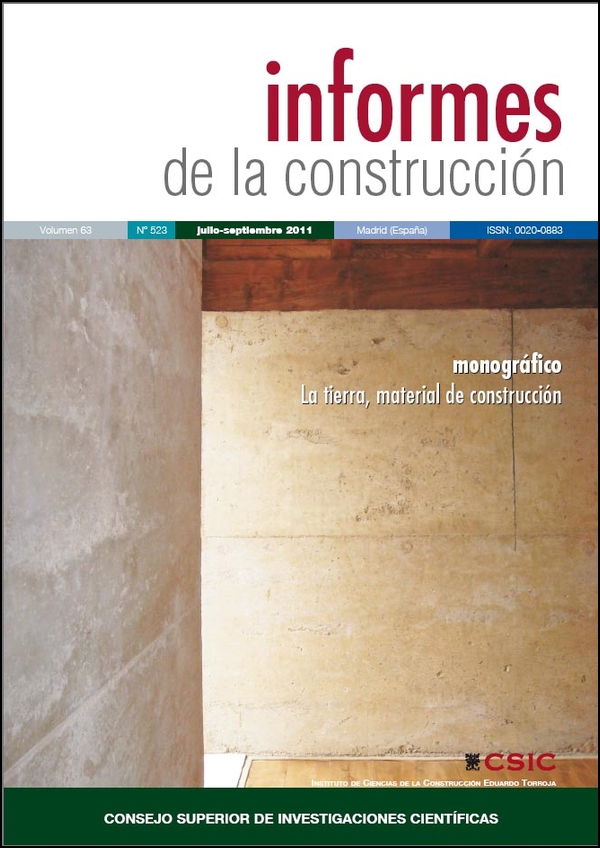Moisture transfer and change in strength during the construction of earthen buildings
DOI:
https://doi.org/10.3989/ic.10.023Keywords:
moisture transfer, strength, desiccation, test, earth constructionAbstract
A number of rammed earth projects constructed in recent years in Germany and abroad testify to the high level of architectural interest in this material, not only in our country. Rammed earth has been “rediscovered”, in particular by young architects, due to its unique materiality and fascinating and individual surface aesthetics. In connection with the realisation of two rammed earth projects realised in Thuringia, Germany, in 2003/2004 some questions arose concerning the process of moisture transfer and changes in strength properties during construction. The earthen building standards detail only very rough estimates of drying times for rammed earth walls. The idea arose to develop a test programme for investigating the aspect of drying time with regard to the change in material strength in rammed earth walls, as well as for elaborating general aspects of testing procedures for rammed earth in standards. The paper presents results of a laboratory programme that attempts to approach this very complex problem. A series of test specimens were produced and the unconfined compressive strength was determined after different drying times varying from 7 to 90 days. The moisture content of the test specimens also was varied: at OMC (Proctor test) and above and below the OMC.
Downloads
References
(1) Schroeder, H.; Bieber, A.: “New Rammed Earth Projects in Thuringia”. LEHM 2004, 4th International Conference on Building with Earth (2004), pp. 190-201. Dachverband Lehm e.V., Leipzig.
(2) Dachverband Lehm e.V. (ed.): Lehmbau Regeln – Begriffe, Baustoffe, Bauteile, Vieweg+Teubner | GWV Fachverlage, Wiesbaden, 2009, 3rd edition.
Heller, T.; Schnellert, T.; Sowoidnich, T.: “Ermittlung von Parametern zur Bestimmung der Festigkeit von Stampflehm“, Studienarbeit WS 2003/04 (2004);
Bauhaus-Universität Weimar.
(4) Schnellert, T.: Untersuchung von Transportprozessen der Einbaufeuchte in Baukonstruktionen aus Stampflehm während der Austrocknung. Diploma project, Faculty of Civil Engineering, Bauhaus University Weimar, 2004
(5) Schroeder, H.: Lehmbau – Mit Lehm ökologisch planen und bauen. Vieweg+Teubner | GWV Fachverlage, Wiesbaden, 2010.
(6) Houben, H.; Guillaud, H.: Earth construction – A comprehensive guide. IT Publishers, London, 1994.
Downloads
Published
How to Cite
Issue
Section
License
Copyright (c) 2011 Consejo Superior de Investigaciones Científicas (CSIC)

This work is licensed under a Creative Commons Attribution 4.0 International License.
© CSIC. Manuscripts published in both the print and online versions of this journal are the property of the Consejo Superior de Investigaciones Científicas, and quoting this source is a requirement for any partial or full reproduction.
All contents of this electronic edition, except where otherwise noted, are distributed under a Creative Commons Attribution 4.0 International (CC BY 4.0) licence. You may read the basic information and the legal text of the licence. The indication of the CC BY 4.0 licence must be expressly stated in this way when necessary.
Self-archiving in repositories, personal webpages or similar, of any version other than the final version of the work produced by the publisher, is not allowed.















